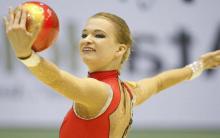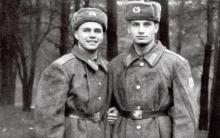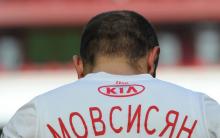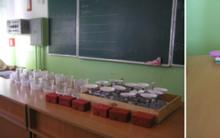About the presentation of ex-Spartak forward Yura Movsisyan as a Real Salt Lake football player.
Spartak forward Yura Movsisyan wanted to return to the USA two years ago. According to the agent of the Armenian forward Patrick McCabe, the footballer wanted to return to Real Salt Lake, whose colors he had already defended before moving to Europe.
As a result, Movsisyan’s wish came true only last weekend, when the clubs signed a one-year lease agreement. And two days later the newcomer’s presentation took place.
“I’m very happy to return home,” Movsisyan began his speech, taking the number 14 jersey. “For me, Salt Lake is home because with the local team I became the MLS champion. This is the best thing that happened in my career.”
“It’s a very emotional day for me and my family because I’m back in Salt Lake,” the former Spartak leader continued. “I’m very excited and can’t wait to get on the field in front of our fans. We hope to win the championship again.” ".
Movsisyan went on to praise his agent and the club’s general manager Craig Weibel, who were able to persuade Spartak to let him go home, despite the fact that the contract between the forward and the red-and-whites expires in just 1.5 years (in fact, last winter the forward extended his contract with "Spartak". And according to some data, the agreement is valid until 2019. Note "SE").
Yura MOVSISYAN in his first Russian club "Krasnodar". Photo by Vitaly TIMKIV.
In turn, the owner of Real Salt Lake Utah Loy Hansen noted the difficult progress of negotiations with Spartak. According to the functionary, the football player was able to leave Moscow only thanks to the “Russian mafia.”
“Movsisyan literally had to ask for help from someone like the Russian mafia to make this transfer happen,” Hansen said. “Nobody wanted to just back down, it was very difficult to make this deal.”
The best season for Movsisyan at Spartak was the 2013/14 season, in which he scored 16 goals in 27 RFPL matches. Summing up his stay at the Moscow club, Movsisyan noted: " The more success I achieved, the worse the attitude towards me was".
“It was the right time,” the player’s agent began to talk about the details of the transfer. “We were waiting for the end of the autumn part of the RFPL championship, because people were tired and they needed a break for the holidays. And Salt Lake put pressure on Spartak because the club needed to understand which squad would prepare for the championship in January.

Yura MOVSISYAN started at Spartak very quickly - with a hat-trick against Terek. Photo by Alexander FEDOROV, "SE"
Movsisyan is still the confident and cocky forward he always was. But now he has a reputation that he will need to prove - that he is one of the best forwards in MLS.
“Six years ago I was a completely different football player,” says Yura, who is expecting the birth of his third child in April. “Now I have gained experience by playing in different leagues, under different circumstances. I had to adapt to life in new countries. All this has made me more strong player."
"Nothing can make me give up now. Nobody can say I'm not very good because I know what I am. I know what type of player I am, I know I can score goals. I don't promise that I will help in defense, but I will definitely start defending in attack. I will score in my own.

During his previous stint in Salt Lake, Movsisyan was a top-notch scorer. Now he believes he has become a stronger forward.
“I’m definitely doing one thing better now: now I only need one chance to score a goal,” says Movsisyan. “Previously, I needed 5, 6, 7 chances to score a goal. But now... Create me a chance, and I’ll score a goal.” .
Movsisyan shouldn't have any problems adjusting because Nick Rimando, Kyle Beckerman, Jamison Olawa, Javier Morales and Tony Beltran were his teammates back in 2009. And they all continue to play in Salt Lake. And current coach Jeff Cassar was one of the assistant coaches at the time.
“Professional teams rarely have a family environment,” says Movsisyan. “I played for clubs where football was just a business, and people were always trying to somehow hurt each other.”
Yes, Real Salt Lake is no longer the same club Movsisyan left, but it is ready to flourish.
“I’m not here to rest,” summed up the ex-Spartak striker. “I didn’t return to MLS to enjoy life and career. I’m here to win the championship again. Now I have to prove again that I am one of the best forwards in the league."
He moved with his family to Los Angeles, USA in 1999, where he began playing football at Pasadena High School at the age of 12. He played a year for Pasadena City College, where he was discovered by MLS scouts. In 2006, he became a player for the Kansas City team, where he played 28 games and scored 5 goals. A year later, Movsisyan signed a contract with Real Salt Lake, where he spent two seasons, scoring 15 goals in 53 games and winning the MLS Cup.
"Runners"
In 2010, Yura Movsisyan defended the colors of the Danish club Randers, in which his national team partner Robert Arzumanyan also played. In 35 matches for the club, he scored 17 goals, including five goals in five matches in the qualifying rounds of the Europa League.
"Krasnodar"
After a series of successful games for the national team, Dynamo Kiev and Rubin Kazan showed interest in Movsisyan. It was later announced that Krasnodar had agreed to transfer the striker, and on January 26, Movsisyan signed a preliminary contract with the club. The transfer amount was 2 million euros. In the first match in the Russian Cup against Amkar, he scored an assist. And in the match of the second round of the Russian championship, coming on as a substitute, he scored a goal against Spartak-Nalchik.
On April 27, 2012, Movsisyan made his first double for Krasnodar. Thanks to a 2:1 victory over Volga, Krasnodar secured a place in the Premier League for the next season.
Best of the day
At the end of the 2011/12 championship, Movsisyan scored 14 goals (5 of which were penalties), thanks to this result, he took 4th place in the list of Premier League scorers, 1 goal ahead of Samuel Eto'o, Kevin Kuranyi and Emmanuel Emenike.
"Spartak Moscow)
On November 27, 2012, information appeared that Movsisyan underwent a medical examination at Spartak, but a few hours later it was refuted. On December 1, a number of media outlets published information that Yura had signed a 5-year contract, but Valery Karpin denied it after the match with Zenit. On December 7, 2012, Movsisyan’s transfer to Spartak was confirmed by the player’s agent, Spartak and Krasnodar. Among the competitors of the red and white were the clubs of the English Premier League - Everton and Stoke City. The contract was signed for 4.5 years with a salary of 1.5 million euros per year.
On March 10, in the 20th round match against Terek, Movsisyan made his debut for the new club. In this match, he scored a hat-trick, entering the history of Spartak Moscow as the first player to score a hat-trick in his debut match for the club. After the match, in an interview with the official Spartak YouTube channel, he said that this was his first hat-trick in an official match in his professional career.
National team career
On August 11, 2010, Movsisyan made his debut in the Armenian national team. In the match against the Iranian national team, which ended in a victory for the Iranians with a score of 3:1, Movsisyan played the first 15 minutes of the game and was replaced by Edgar Manucharyan, as he arrived in Yerevan with a minor injury and was not able to play at least half. Movsisyan himself stated that he had the opportunity to play in the US national team, but he decided to become a player for the national team of his historical homeland. In Movsisyan’s debut match for the national team, fans hung a poster in the stands with the inscription “Yura, welcome home.” Movsisyan scored his first goal for the Armenian national team on September 3, 2010 in an away match against the Macedonian national team with a pass from Henrikh Mkhitaryan; in that match, the Armenian national team missed the victory in the last seconds and finished the game with a score of 2:2. In the match with the Slovak national team, he also scored a goal. And in the match with the Andorran national team, he helped defeat the opponents with a score of 4:0, scoring one of the goals. In the match with the Macedonian national team, Yura once again showed his best side, making 3 assists. As a result, the Armenian team won a big victory with a score of 4:1.
"Olympiastadion" (Munich, Germany). Opened in 1972. Accommodates 69,250 spectators.
The final match of the first UEFA Champions League in the 1992/93 season took place at the Munich Olympic Stadium. Marseille and Milan competed for the trophy. The meeting, which took place on May 23, 1993, ended in victory for the French team with a score of 1:0.
The Munich Arena hosted the second final of the main European club tournament in 1997. In that match, Borussia Dortmund beat Juventus 3:1.

Olympic Stadium (Athens, Greece). Opened in 1982, reconstructed in 2002-2004. Accommodates 69,618 spectators.
The Olympic Stadium in the capital of Greece can be called happy for Milan. After losing in the final of the 1992/93 season, the Italian club again reached the decisive stage of the tournament the following year, where they defeated Barcelona with a score of 4:0.
Thirteen years later, the Rossoneri returned to the Athens Olympic Stadium as trophy contenders and again managed to win, this time over Liverpool 2-1.

"Ernst Happel Stadion" (Vienna, Austria). Opened in 1931, reconstructed twice - in 1986 and 2008. Accommodates 55,665 spectators.
The arena in the Austrian capital hosted the final of the Champions League of the 1994/95 season, and Milan participated in it for the third time in a row. Like two years earlier, the Italians lost with a score of 0:1, but this time to Ajax.

Stadio Olimpico (Italy, Rome). Opened in 1937, the last reconstruction was carried out in 1989-1990. Accommodates 72,698 spectators.
In the 1995/96 season, Ajax came to Rome as the reigning Champions League winner, but the Dutch club failed to defend its title. Already in the first half of the match with Juventus, the teams exchanged goals, after which they brought the matter to a penalty shootout. The Bianconeri were more accurate and won the main European club trophy.
The Olympic Stadium in Rome received the right to once again host the Champions League final of the 2008/09 season, but this time the local teams failed to make it to the decisive stage of the tournament. The trophy was won this year by Barcelona, beating Manchester United 2:0.

Amsterdam Arena (Amsterdam, Netherlands). Opened in 1996. Accommodates 54,990 spectators.
The stadium, which now bears the name of Johan Cruyff, hosted the Champions League final just two years after it opened. In May 1998, Real Madrid and Juventus met on the field of the Amsterdam Arena. The match ended with a score of 1:0 in favor of the Madrid club.

Camp Nou (Barcelona, Spain). Opened in 1957, it was reconstructed twice - in 1995 and 2008. Accommodates 99,354 spectators.
The Barcelona stadium has seen many memorable matches, but the 1998/99 Champions League final stands apart. Without exaggeration, that meeting between Bayern and Manchester United can be called legendary. The Germans took the lead in the 6th minute and controlled the game until the last minutes, but two goals scored by the Mancunians in stoppage time of the second half brought victory to Manchester United.

"Stade de France" (Saint-Denis, France). Opened in 1998. Accommodates 81,338 spectators.
The arena, built on the outskirts of Paris, hosted the Champions League final for the first time in the 1999/2000 season. The meeting between Real Madrid and Valencia ended with a confident victory for the Madrid club with a score of 3:0. This was the first time in the history of the Champions League that clubs from the same country played in the final.
6 years later, in the 2005/06 season, Barcelona and Arsenal competed for the trophy on the Stade de France field. The Londoners, who played in the minority from the 18th minute after goalkeeper Jens Lehmann was sent off, opened the scoring 10 minutes before the break, but in the second half goals from Samuel Eto'o and Juliano Belletti brought victory to the Catalans - 2:1.

"San Siro" (Milan, Italy). Opened in 1926. The last reconstruction was carried out in 1989. Accommodates 80,018 spectators.
The San Siro Stadium was renamed in honor of Giuseppe Meazza in 1979, but the historical name of the arena is still the most popular and recognizable throughout the world. The Champions League final has been held here twice.
In the 2000/01 season, Bayern and Valencia played a dramatic match in Milan in which penalty kicks played a major role. Already in the 2nd minute, Gaizka Mendieta brought the Spaniards ahead from the penalty spot, and 4 minutes later, the Bats goalkeeper Santiago Canizares saved a penalty kick from Mehmet Scholl. At the beginning of the second half, Stefan Effenberg equalized the score from the penalty spot, and the fate of the match was decided in a series of post-match strikes, in which the Bayern players were more accurate.
15 years later, in May 2016, Real Madrid and Atlético Madrid almost exactly repeated the scenario of the game between Bayern and Valencia in the same arena. Regular time also ended with the score 1:1, in extra time the teams failed to score, and the Royal Club won in the penalty shootout.

Hampden Park (Glasgow, Scotland). Opened in 1903. Reconstructed in 1999. Accommodates 51,866 spectators.
Real Madrid and Bayer 04 took to the Hampden Park pitch in the Champions League final in May 2002, and six months later the arena celebrated its 99th anniversary. The match itself ended with a score of 2:1 in favor of Real Madrid and was remembered for Zinedine Zidane's beautiful goal from the line of the penalty area.

Old Trafford (Manchester, England). Opened in 1910. The last reconstruction was carried out in 2006. Accommodates 74,879 spectators.
The second final in the modern history of the Champions League involving teams representing one country took place in the 2002/2003 season. In the decisive match of the tournament, which took place in Manchester, Milan and Juventus met. The main and extra time ended with the score 0:0, and in the penalty shootout the victory for Milan was brought by Andrei Shevchenko's accurate shot.

Veltins Arena (Gelsenkirchen, Germany). Opened in 2001. The stadium's capacity was last increased in 2015; today it is 62,271 people.
The arena has had its current name since the summer of 2005; previously it was called Arena AufSchalke. The stadium hosted matches of the World Football and Hockey Championships. Since 2002, the annual Christmas Biathlon Star Race has been held here.
The 2004 Champions League final, held in Gelsenkirchin, is one of the most memorable for Russian fans, as one of the goals was scored by Dmitry Alenichev. The Porto midfielder set the final score of the match against Monaco (3:0). The Portuguese team at that time was led by Jose Mourinho, who became the youngest head coach in history to win the main European club trophy.

Olympic Stadium (Istanbul, Türkiye). Opened in 2002. Accommodates 80,500 spectators.
The stadium in Istanbul was built to host the 2008 Summer Olympics, but Turkey's bid did not receive the required number of votes, and the Olympics took place in Beijing. Currently, the arena in Istanbul bears the name of the first president of Turkey, Mustafa Kemal Ataturk, and is the largest in the country.
The 2005 Istanbul Champions League final is arguably the greatest in the tournament's history. In the decisive match, Milan crushed Liverpool with a score of 3:0 after the first half, but in the second half of the meeting, goals from Gerrard, Smicer and Alonso turned everything upside down. There were no goals scored in extra time, and the British club was stronger in the penalty shootout.

"Luzhniki" (Moscow, Russia). Opened in 1956. The last reconstruction was carried out in 2017. Accommodates 81,000 spectators.
For the first time, Russia received the right to host the 2007/08 Champions League final, and this honorable mission was entrusted to the Luzhniki Grand Sports Arena. Chelsea and Manchester United competed for the trophy, marking the first time two English teams met in a Champions League decider.
The game caused a great stir among fans in both England and Russia, with more than 67 thousand spectators present in the stands. Midway through the first half, Cristiano Ronaldo put Manchester United ahead, but Frank Lampard equalized just before the break. The second half and extra time passed without any goals scored, and in the penalty shootout the Mancunians were more accurate.

Santiago Bernabeu (Madrid, Spain). Opened in 1947. The last reconstruction was carried out in 2001. Accommodates 81,044 spectators.
The home arena of one of the most successful clubs in modern football has hosted the Champions League final only once - in the 2009/10 season, but this only match so far has gone down in history.
Inter and Bayern met in the Madrid final. The match ended with a score of 2:0 in favor of the Italian club, and Jose Mourinho, who was working with the Nerazzurri at that moment, became the third coach in history who managed to win the Champions Cup with two different teams (there are now five of them: in addition to the Portuguese, this Ernst Happel, Ottmar Hitzfeld, Jupp Heynckes and Carlo Ancelotti).
An interesting fact is that in the Milanese squad in the 2010 final there was only one Italian - Marco Materazzi, and even he appeared on the field in the 90th minute of the match.

Wembley (London, England). Opened in 2007. Accommodates 90,000 spectators.
The new Wembley is built on the site of the legendary arena, which hosted matches of the World and European Championships, the Olympic Games and many European Cup finals.
The final match of the 2010/11 Champions League, which took place at the new Wembley, in a sense turned out to be a home match for Manchester United, but this did not help the Mancunians win the trophy. Barcelona, led by the trio Xavi - Iniesta - Messi, won with a score of 3:1.
In 2013, Wembley hosted the first “German” Champions League final, in which Bayern and Borussia Dortmund met. The victory and the cup were brought to the Bavarians by a precise shot from Arjen Robben, who set the final score at 2:1 in the 89th minute.

Allianz Arena (Munich, Germany). Opened in 2005. Accommodates 67,812 spectators.
The decisive match of the 2011/12 Champions League season was the first final of the tournament, which was held at the home stadium of one of the participants in the meeting - Bayern hosted Chelsea in Munich. The scoring was opened only in the 83rd minute after a shot by the hosts' forward Thomas Muller, but five minutes later the leader of the Londoners' attack, Didier Drogba, restored the balance.
The fate of the trophy was decided in a penalty shootout. Bayern again took the lead after Philipp Lahm's accurate shot and Juan Mata's miss, but then the visiting players converted all their attempts, while the German team's players made two misfires. Thus, Chelsea won the Champions League for the first time in their history.

"Millennium" (Cardiff, Wales). Opened in 1999. Accommodates 73,930 spectators.
The home arena of the Wales national team was opened at the turn of the millennium, having received the appropriate name, but in 2016 the stadium received a new name - Principality Stadium, which, with a certain amount of imagination, can be translated simply as "Princely Stadium", since Wales is part of the United Kingdom, and the Queen's son Elizabeth II Charles bears the title Prince of Wales.
But let's return to the Champions League. The final of the main European club tournament took place here in 2017, and the participants in that match were Real Madrid and Juventus. The Madrid team won with a score of 4:1 and won their second Champions League title in a row, and football fans remembered that meeting for the super goal of Turin striker Mario Mandzukic.

"Metropolitano" (Madrid, Spain). Opened in 1994. Reconstructed in 2017. Accommodates 67,700 spectators.
Liverpool and Tottenham met in the 2019 Champions League final. The final was the first in Tottenham's history, and the first since the 2013 final, where at least one Spanish club did not play. Liverpool, reaching the final for the second time in a row, won the match 2-0. In his third Champions League final as head coach, Jurgen Klopp won the trophy.
Armenian national team forward Yura Movsisyan, who in recent years was considered one of the few Spartak stars in the attack line, is leaving the Moscow club. The red and whites agreed with Yura's former team, the American Real Salt Lake, to transfer the striker on loan with an option to buy. The agreement is valid until December 1, 2016.
“Thanks Yura for the time spent in our team and wishes him success in his future career,” a message on the club’s official website says.
The forward himself, in turn, thanked the Moscow team and its fans for their support on his Facebook page.
“I am pleased to announce my return to MLS and my former team, Real Salt Lake, with whom I won the Cup in 2009,” the player wrote. —
I sincerely thank Spartak and all the loyal fans for their support. I'm looking forward to starting a new chapter in my career."
In a commentary for the official Salt Lake website, Movsisyan added that it was the high level of the Russian Premier League that made him what he is now.
“There are a lot of big-name players in the Russian Championship,” the footballer noted. “Here they spend a lot of money on serious football players. The level of the Russian league is very high by European standards. I was pleased to score goals and play against such strong opponents. I always wanted to compare myself with them.
This made me focus more on the game and prove my worth every day. It made me who I am today."
General manager Craig Weibel noted that he was glad to have the forward back.
“Movsisyan is a real scorer. Statistically, he is productive wherever he plays. Moreover, he is now in the prime of his life. We are interested in high-level football players coming to us, and Yura is one of them. We are very glad that he has returned to us,” the club’s official website reports the words of the functionary.
The USA is actually a second homeland for Movsisyan. He came to the States from Baku at the age of 12, began his football career there and achieved his highest achievement so far - winning the 2009 MLS Cup.
Subsequently, he played for the Danish Randers and the Russian Krasnodar, and in the 2012/13 season, having already joined the red-and-white camp, he became the top scorer of the championship with 13 goals. And although Yura during this period established himself as a specialist for teams from the bottom of the standings, Spartak seriously hoped to solve the problem of the main forward with his help.
At first everything worked out great. Already in the debut meeting, Movsisyan scored a hat-trick against Terek, going down in history as the first player of the “people’s team” to score three goals in the opening match for the club, and the first representative of Armenia to achieve such success in the RFPL.
However, a series of injuries, problems with excess weight and, perhaps, a lack of motivation did not allow the forward to truly reveal himself. In the 2013/14 season, he was still productive, scoring an even more important hat-trick in a game with the red-whites’ principal rival, but he failed to take Spartak to a new level.
Failures followed on all fronts, and even the title of the team's best player according to the fans was unlikely to greatly sweeten the unpleasant results of the season.
The next year turned out to be completely crumpled. Due to injuries, Movsisyan appeared in only 16 championship matches (and played all 90 minutes in only one), scored two goals and slowly ceased to be considered as the main striking force of the club.
With the purchase, it seemed that Yura would finally have fire support and he would get a chance to shine in Spartak, but the results of the Armenian scorer in the new championship obviously did not impress the management.
In total, the player played 66 matches for the red and white team, scoring 27 goals. His contract with Muscovites runs until the summer of 2017.
Now the capital’s club will again have to solve the problem of a second striker, who would not just replace Yura, but would become for the club what Movsisyan was never able to do - a real attack leader.
Other news, materials and statistics can be viewed on the Russian Premier League, as well as in the sports department groups on social networks
When on December 12, 2012, Spartak, after a long transfer saga, finally announced a contract with the Krasnodar striker Yura Movsisyan, the reaction of the red-and-white fans was restrained. Firstly, at that time the team already had a lot of forwards: Dzyuba, Emenike, Ari, Welliton, who had lost his former fervor, had just been loaned out. Secondly, if for the Armenian forward this deal was an obvious promotion, then the compliance of Movsisyan, who shot in modest clubs with the level of Spartak, raised questions. At least for many red-and-white fans.
Now, when three years later Yura leaves Spartak (but his return from the American Real Salt Lake looks, frankly, unlikely), all doubts can be answered. Movsisyan turned out to be a player quite up to the level of the red and white team. But this level is not at all what the fans expected. In 2012, Movsisyan’s step looked logical and progressive. But now it seems that everything is the other way around: if Yura had stayed in Krasnodar, he would have continued to progress with the team, played in European competitions, and, lo and behold, he would have earned an invitation from a serious club from the top league. But in Spartak Movsisyan remained at the 2012 level.
There is nothing to blame Yura for in this regard. He never slacked, he gave himself completely to the game. But he wasn’t a superman either, pulling the club upward through sweat, blood and tears. When rumors first appeared in the fall about those who would fall under the “purge” of the team, announced Sergei Rodionov, : “Yura is not the kind of player who, for the sake of the club or coach, will squeeze the last out of himself, play with injections. In recent years, he has had a chronic condition of injury - no matter how much it hurts, he is being treated thoroughly. But this is the approach of professional players, not to say that it is wrong. For this, he cannot be considered a bad football player.”
Movsisyan really thoroughly recovered from frequent injuries - he probably spent almost a season on this out of three years at Spartak. When he ended up in Yakin’s reserve, he didn’t rush and threw everything in the press and on the field, coming on as a substitute, as if he had already learned the Spartak lesson: there is no point in going out of your way when no one around is noticed in this. Bad season? It’s okay, we’ll try to do better next time. Bad coach? Nothing, they will soon replace it with the next one. Collective irresponsibility in the team, as the experience of Spartak shows, is very quickly adopted even by newcomers.
Remember how Movsisyan made his debut: a hat-trick in the first match is an unprecedented result. He started his first full season in a red and white T-shirt with the same impact: a hat-trick for Zenit, 12 goals in the first round, second place in the scorers race, behind the rented Rostov Dziuba. Then there was the first serious knee injury, Karpin’s dismissal and a short period when Yura was practically the only one who, under Dmitry Gunko, tried to save another unclear season. Then, it seems, he understood everything. In any case, we never saw Movsisyan with such burning eyes again.
But just before moving to Spartak, he then headed the Armenian national team Vardan Minasyan spoke meaningfully about the football player’s motivation. According to the mentor’s feelings, in “Krasnodar” against the backdrop of talk about leaving for promotion.
Maybe if Yura had moved to one of the European clubs after the super successful 2013/14 season and received a new challenge in his career, now we would write about his play exclusively in admirable terms. But last winter, when Movsisyan’s play had already faded a little, injuries continued, and Yakin’s confidence was weakening, the club unexpectedly extended his already long-term (until June 2017) contract for another two years. After this, Yura finally got stuck in Spartak. And even now, when the club is no longer betting on him, 3.5 years of the current agreement are looming on the horizon, complicating the process of a final, rather than rental, separation, which could benefit both the player and Spartak.
Until the red-whites replace collective irresponsibility with responsibility and become a truly coherent and purposeful team from leader to reserve, one individual (Emenike, Jurado, Romulo and so on) will not take Spartak to a new level. All you need here is a real Superman. But he costs completely different money and is unlikely to be eager to wear the T-shirt of a club that, while declaring league championship ambitions, cannot even boast of regular participation in the Europa League. And Movsisyan is just another good striker who turned out to be unnecessary for Spartak.











What is aponeurosis and in what cases does this pathology need special attention?
Yuri Borzakovsky. Sports biography. Interview with Yuri Borzakovsky: amateur and professional running Athletics Borzakovsky short biography
Alexander Erokhin: career and achievements
Third trimester: gymnastics for mothers
Drying the body for girls at home Basic principles of drying